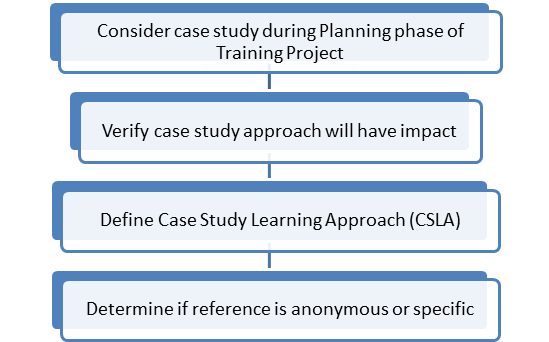ATD Blog
Using Case Studies in Learning and Development Projects: A Lessons Learned Approach—Part 2
Mon Jul 09 2012

In part 1 of this series, we discussed the basics of using a case study approach to support an engaging learning and development environment, including some of the most salient advantages of case studies. In Part 2, we will explore specific rationale, delivery methods for getting the most out of case studies, and tips on how to reference them.
The rationale for using an existing case study:
There is impact and the outcome of a situation is noticeably negative or positive (not neutral): the aspects of the case can be emphasized to make a point (case-in-point). This example illustrates customer training using ATMs and teller services:
Single Instance Proof. An example documents a company’s success, i.e., a transition to 24/7 live person customer service improves fraud detection for ATM services.
Triangulation. In some instances multiple perspectives need to be utilized to verify the conclusion. For example, adversarial evaluation is used in conjunction with a case study approach to look at the pros and cons of using ATM vs. teller services in high-risk areas. Meta-analysis and meta-evaluation may also have value as part of this process to determine the likelihood of encountering ATM skimming devices.
Case Studies are more than a one-time event. They can be delivered on a periodic basis to support employee professional development. This enables the trainer lots of flexibility in how they will implement a Case Study Learning Approach (CLSA):
Instructor-led: The trainer presents the case study from beginning to end and then solicits the group with questions and comments.
Group Participation: This may involve using a seminar approach to facilitation where the participants break out into groups and review the case study and then present their conclusions
E-learning: video, audio, electronic references and other media can be integrated to allow for an engaging case study experience via the web
Read and understand: a simplistic text-based review can be implemented with good results.
On-the-Job Learning (OJL): This is similar to On-the-Job-Training (OJT) except that the trainee uses case studies as a method of reference to demonstrate independent performance. For example, during safety training, the person demonstrates adherence to appropriate safety guidelines based upon what they learned in the case studies.
Figure 1. Simplified Model for Learning and Development Case Study Integration
Case study references are anonymous or specific (Oil & Gas Industry example):
Anonymous reference: There is sensitivity to drawing direct attention to a current event.
It may be inappropriate to mention a specific company because it will not add instrumental value. For example, there was a massive oil spill and it is preferred not to list “Company X” due to the fact that there have been numerous reported large-scale oil spills by different companies over the past 10 years.
The focus of the lessons learned from the case may be on environmental sensitivity and the company’s rapid response to address the situation. Moreover, their commitment to developing technology to avoid a repeat occurrence.
Specific reference: the person, organization or thing is cited so readers know specific details.
This is appropriate when the current state of affairs is very similar to what could potentially happen.
A regulatory authority has been performing numerous audits at Oil and Gas Companies “X”, “Y” and “Z” and it has been determine that their procedures do not address items “1, 2, 3” so they receive warning letters. Under these circumstances, it is important to know “who”, “when”, “why”, “where” and “how” this happened.
For more information on Lessons Learned, see http://www.lessonslearned.info.
There are also additional references in the book The Basics of Project Evaluation and Lessons Learned. New York, NY: Productivity Press, 2011.

You've Reached ATD Member-only Content
Become an ATD member to continue
Already a member?Sign In
